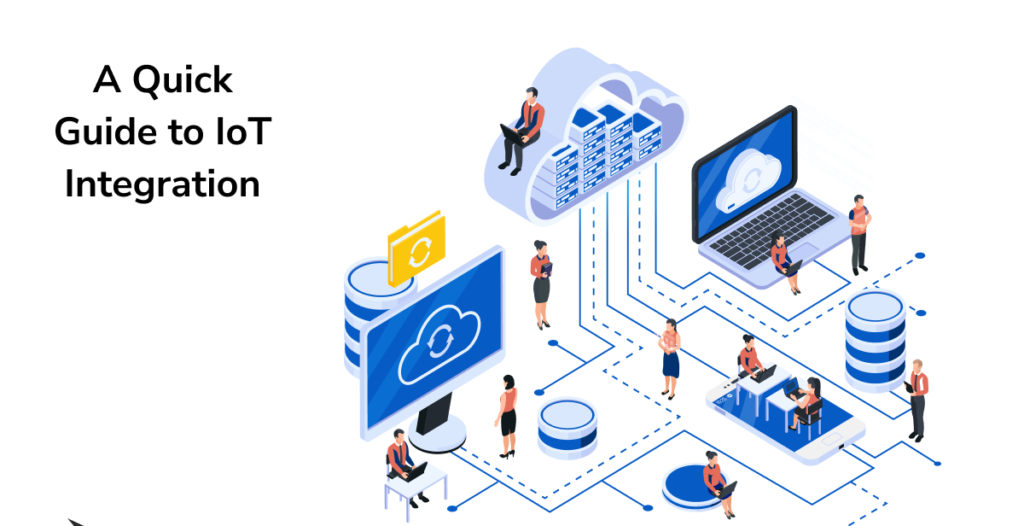Introduction
In today’s fast-paced business environment, staying ahead of the competition requires more than traditional methods. The rise of smart technology, especially the Internet of Things (IoT), offers businesses a powerful tool to enhance operational efficiency. IoT services allow for seamless integration of devices and systems, supplying real-time data and actionable insights. This transformation not only streamlines processes but also contributes to business optimization, making it essential for any company aiming to improve productivity and maintain a competitive edge.
Understanding IoT Services
 Image courtesy: Unsplash
Image courtesy: Unsplash
Definition and Scope of IoT Services
The Internet of Things, or IoT, refers to the seamless connectivity between everyday objects and the internet, enabling them to send and receive data. In the context of business, IoT services encompass the technology and processes that allow companies to harness this connectivity. These services include the integration of sensors, cloud computing platforms, and analytics tools, creating smart networks that facilitate efficient workflows and interactions across various operational domains. By connecting devices and systems in this way, businesses can gain a more comprehensive understanding of their operations, leading to enhancements in productivity and optimization.
Key Components of IoT Systems
At the heart of an IoT system are several vital components that work harmoniously to deliver robust functionality:
– Devices and Sensors: These are the physical ‘things’ in IoT, equipped with sensors that collect data from the environment or the system.
– Connectivity: The communication framework that enables data exchange between devices and the central system, often relying on Wi-Fi, Bluetooth, or cellular networks.
– Data Processing: Once data is captured, it is analyzed, often in real-time, by cloud-based systems to extract actionable insights.
– User Interface: This component allows users to interact with the IoT system, providing control and visibility over operational processes.
Benefits of IoT Integration for Operational Efficiency
Real-time Data Collection and Analysis
Integrating IoT services allows businesses to collect data in real time, providing invaluable insights into operations. This data availability enables swift identification of performance issues and bottlenecks, empowering companies to address problems as they arise. Continuous data streamlining provides a clearer picture of business processes, leading to more agile responses and improved service delivery.
Automation and Process Optimization
IoT integration facilitates the automation of routine tasks, saving time and minimizing human error. By using IoT-enabled devices, processes like inventory management, machinery diagnostics, and environmental monitoring can become automated, reducing the need for manual interventions. This not only contributes to time savings but also ensures consistency and accuracy in operations, leading to greater efficiency and cost reductions.
Enhanced Decision-making Capabilities
With the vast amount of data generated by IoT systems, decision-making processes become well-informed and evidence-based. Real-time analytics provide actionable insights, allowing managers to make predictions and implement strategies proactively. This data-driven approach leads to smarter decision-making, aligning business outcomes with operational objectives and market demands. As a result, businesses can anticipate changes or disruptions and adapt quickly to maintain their competitive edge.
Steps to Integrate IoT Services
Assessing Current Infrastructure and Needs
Before diving into IoT integration, it is crucial to assess your current infrastructure and identify your business’s specific needs. Begin by evaluating the existing technologies and capabilities within your organization. Are your current systems capable of supporting new IoT solutions, or will additional investments be necessary? Discuss with stakeholders to understand the areas where IoT can add the most value. This initial assessment helps create a clear picture of what your organization requires, ensuring a smoother integration process.
Selecting the Right IoT Solutions
Once you have a thorough understanding of your infrastructure and business needs, the next step is selecting the right IoT solutions. Consider solutions that align with your objectives and offer scalability for future growth. Analyze different vendors and ensure their products are compatible with your systems. Look for features like ease of use, technical support, and the ability to integrate with existing software. Selecting suitable IoT solutions sets the stage for enhanced operational efficiency and reduced downtime.
Implementing and Scaling IoT Technologies
The implementation phase involves the actual deployment of the selected IoT solutions. Pilot projects can be a great way to test integrations and make necessary adjustments before a full rollout. Additionally, provide training for staff to ensure they understand how to utilize new technologies effectively. As you begin to see results, consider scaling the solutions across other departments or locations, systematically increasing your IoT footprint to enhance overall operational productivity.
Common Challenges in IoT Integration
 Image courtesy: Unsplash
Image courtesy: Unsplash
Security and Privacy Concerns
Security is often a primary concern when integrating IoT services due to the increased number of connected devices. Each device represents a potential entry point for unauthorized access, making robust security measures essential. Ensure that proper encryption, authentication processes, and regular security audits are in place to protect sensitive data.
Interoperability Issues
Interoperability refers to the ability of different systems and devices to work together. In IoT integration, this can be challenging as various devices may run on different protocols or standards. Overcoming these issues requires selecting technologies that support open standards and adopting middleware solutions to facilitate smooth communication between disparate systems.
Managing Data Overload
IoT devices generate vast amounts of data, which can lead to overload if not managed efficiently. It is essential to have a strong data management strategy, including data filtering and storage solutions, to handle this influx. Implementing advanced analytics can help parse through the data, extracting actionable insights to drive informed business decisions and further optimize operations.
Conclusion
Integrating IoT services into your business operations is not just a forward-thinking strategy—it’s a foundational shift toward enhanced efficiency and productivity. By embracing smart technology, businesses can streamline their processes, reduce costs, and make more informed decisions. As IoT continues to evolve, its role in operational efficiency will only grow. Companies that adapt to this technological advancement will likely find themselves better positioned to thrive in a competitive market, ensuring sustained growth and innovation.

